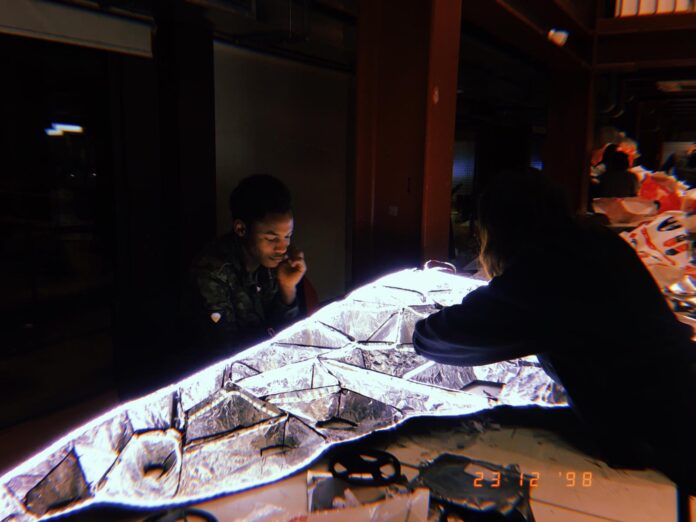Muhseen Abdullahi approaches light not as a tool, but as a living material. A designer by profession, and a philosopher of perception by instinct, his work bridges architecture and emotion through the disciplined use of illumination. He joined us to talk about his work.

Honestly, I’d say it’s a mix of both. The designer in me focuses on solving the practical side, understanding what the space needs, how it’s used, and what problems light can fix. But the artist in me is always thinking about how it should feel. I like to think of light as a storyteller. It’s not just about visibility, it’s about atmosphere, rhythm, and emotion it creates. So even when I’m being technical, I’m still trying to tell a story through the way light moves or interacts with space.
This was actually one of my first visual art/lighting projects and it really opened my eyes to how connected our senses are. You realize quickly that people don’t just see a space, they feel it. When light and sound come together in the right way, it changes how we move and react. I noticed that even small shifts in brightness or tone could completely alter the mood or energy in the room. It taught me that design isn’t just about what looks good, it’s about creating an experience that touches people on multiple levels, even subconsciously.
It was the first large scale design I have done and it is something to approach with great care. With this, I wanted the lighting to do more than just make things visible, I wanted it to bring people together. The development was about innovation and community, so I designed the lighting to reflect that. Warm tones were used in shared spaces to make people feel welcome and connected, while cooler tones helped define movement and structure. The idea was to create a sense of flow so that even at night, the estate felt alive, safe, and unified. It wasn’t just lighting a city; it was shaping its identity.
I knew the lighting fixtures I selected for this design will be too high in levels and it is an area where the art works constantly change, so, I designed with track lighting where they can be moved and rotated along the track to provide focus on specific showcases or displays and made them dimmable because some arts require low lux levels and some require high lux levels. That way, the art environment is customisable to fit any type of usage.
My story is that, growing up, I was always captivated by how light defines spaces and was always wondering how movies, animations and drawings approach light and they all have a unique way they approach it and you just go woww because it provides focus on things. An instance is when they change the lighting to tell a memory, a dream or a vision and you just know what that light means. So, I want it to tell stories about people, about emotion, memory, and connection. Every space has a personality, and light can bring that out. In some places, the story might be calm and reflective, in others it might be vibrant and energetic. I love when light helps people feel something they can’t quite explain. Maybe it’s comfort, maybe it’s awe but it stays with them. That’s the kind of story I want light to tell.
I’m really excited about how responsive lighting is becoming. With new technology, light can now react to people, it can change with movement, sound, or even emotion. This is something that has been for a while, it can literally react to voice (sound), movements (using PIRs) and even with our phones. That opens up endless creative possibilities. But I also think it’s important not to lose the human side of design. Technology should enhance emotion, not replace it. I hope we always keep that sensitivity, the understanding that lighting isn’t just technical, it’s deeply emotional. I know with how quickly AI is emerging in every sector, it will be hard to keep it out of lighting design, and honestly, I don’t know if we should but if anything, I see AI as a kind of assistant, something that can help with precision, simulation, and efficiency but not replace the human touch that makes lighting emotional and meaningful. The best lighting, I think, still comes from feelings.
